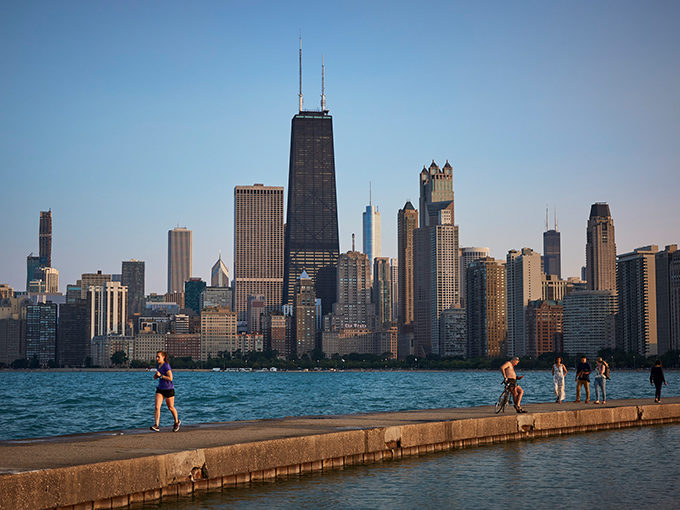
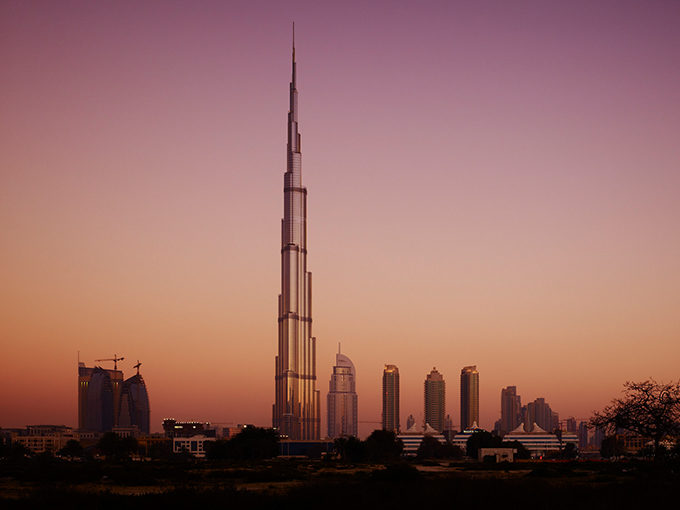
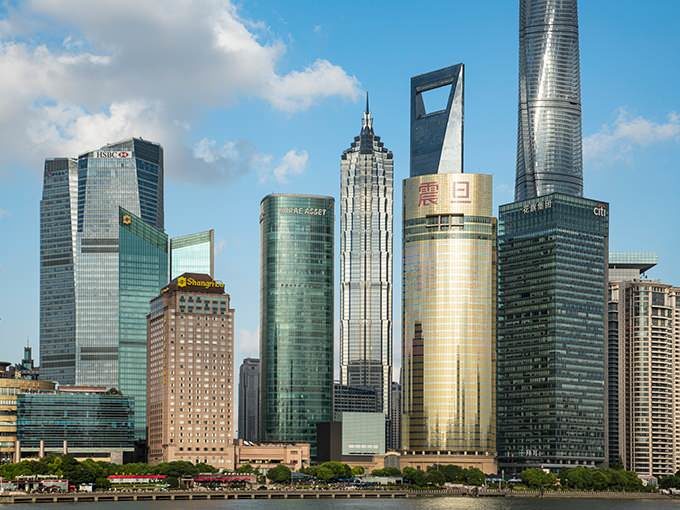
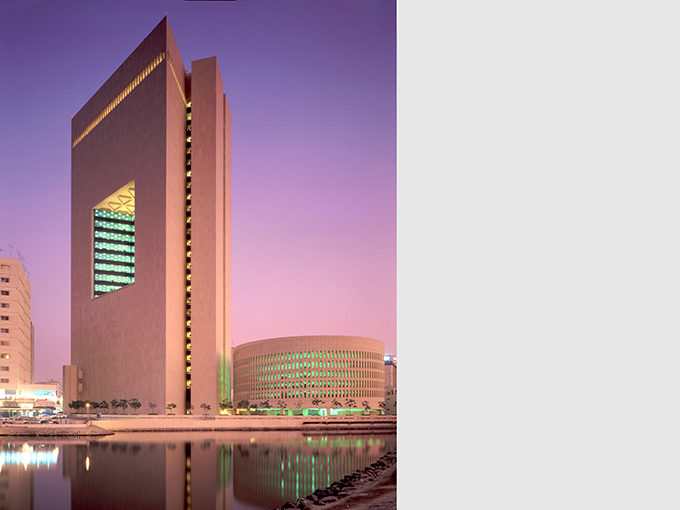
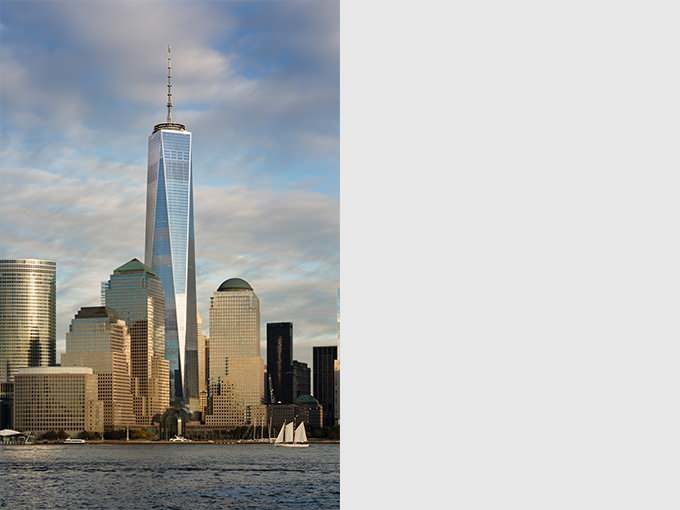
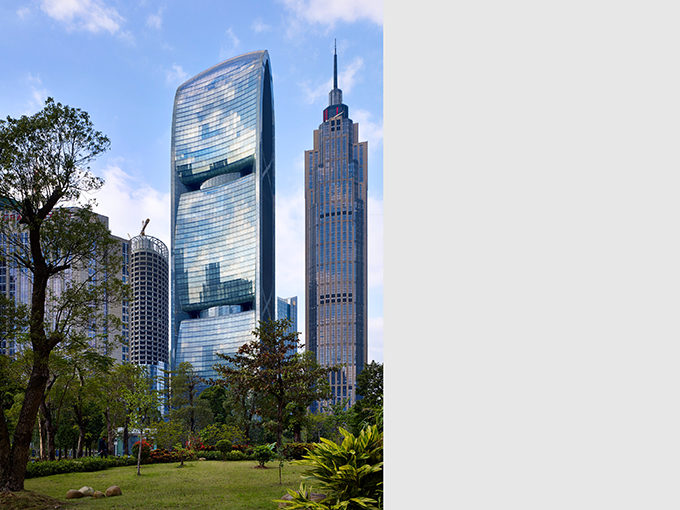
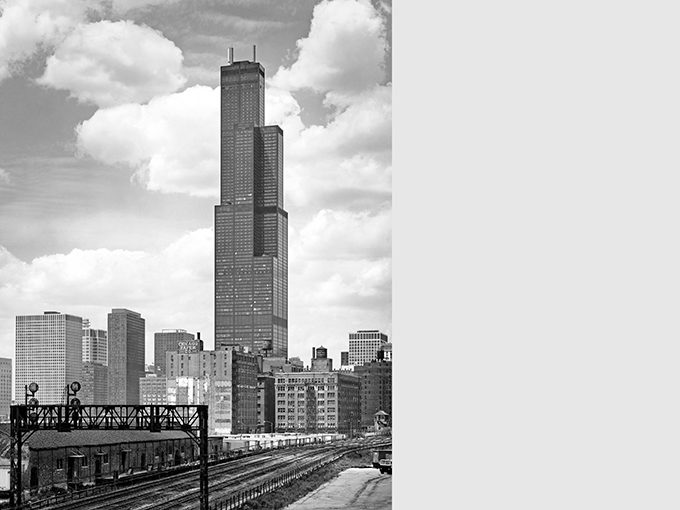
Seven SOM projects were honored in the Council on Tall Buildings and Urban Habitat’s (CTBUH) 50 Forward 50 Back Awards program, which named 50 of the world’s most influential tall buildings from the last 50 years. The towers selected represent significant advancements in skyscraper technology and design that have been made in the last 50 years. SOM’s continued role as an innovator in this field is evidenced by the span of projects included in the CTBUH list, all seven of which are described below.
The 50 projects will be honored at the CTBUH 10th World Conference in Chicago.
875 North Michigan (formerly John Hancock Center), Chicago, 1969
875 North Michigan Avenue, formerly known as the John Hancock Center, was the result of a close collaboration between architect Bruce Graham and structural engineer Fazlur Khan. Its innovative design—a tapered tower in which the steel frame provides structural support as well as a distinctive profile—reflects the interdisciplinary approach that defines SOM.
Burj Khalifa, Dubai, 2010
Soaring 828 meters above Dubai, Burj Khalifa is the world’s tallest building. The design for the 162-story tower combines local cultural influences with cutting-edge technology to achieve high performance in an extreme desert climate. Beyond its record-breaking height, the Burj Khalifa incorporated innovative new structural and construction efficiencies to reduce material usage and waste. These include a “sky-sourced” ventilation system, in which cool, less humid air is drawn in through the top of the building. The tower also has one of the largest condensate recovery systems in the world.
Jin Mao Tower, Shanghai, 1999
The 420-meter-tall Jin Mao Tower was China’s tallest building at the time of its completion and today remains its most iconic. Recalling historic pagoda forms, with setbacks that create a rhythmic pattern, the 88-story tower has become a model for skyscraper design throughout the country.
National Commercial Bank, Jeddah, 1984
Set in a plaza on the edge of the Red Sea, the distinctive National Commercial Bank headquarters is triangular in form. The 27-story building reveals a travertine enclosure with colossal openings, which allow light into the interior across three courtyards. Each of the building’s V-shaped floors is shielded from direct sun and wind, while a central wall that extends from the skylight of the first floor up through the roof allows accumulated heat to rise out of the building. In developing this form, SOM incorporated two important features found in traditional Islamic architecture: natural ventilation and inward orientation.
One World Trade Center, New York City, 2014
When it was completed in 2014, One World Trade Center helped reassert downtown Manhattan’s preeminence as a business center while establishing a new civic icon for the country. Extending the long tradition of American ingenuity in high-rise construction, the tower reveals an innovative mix of architecture, structure, urban design, safety, and sustainability.
Pearl River Tower, Guangzhou, 2013
When it was completed in 2013, the 214,000-square-meter Pearl River Tower incorporated the latest green technology and engineering advancements. The soaring tower’s sculpted body directs wind to a pair of openings at its mechanical floors, where traveling winds push turbines that generate energy for the building. Other sustainable elements integrated in the innovative design include solar panels, a double-skin curtain wall, a chilled ceiling system, under-floor ventilation, and daylight harvesting, all of which contribute to the building’s energy efficiency.
Willis Tower (formerly Sears Tower), Chicago, 1974
For years the tallest building in the world, the 110-story Willis Tower (formerly Sears Tower) marked a major step toward exemplifying and defining SOM’s belief that a building’s structure should naturally inform its exterior profile. The tower’s structure comprises nine squared tubes, each rigid within itself without internal supports. The tubes are bundled together as a closed square below the first 50 stories. Above the first 50 stories, the tubes terminate at varying heights and create a multi-tiered form.